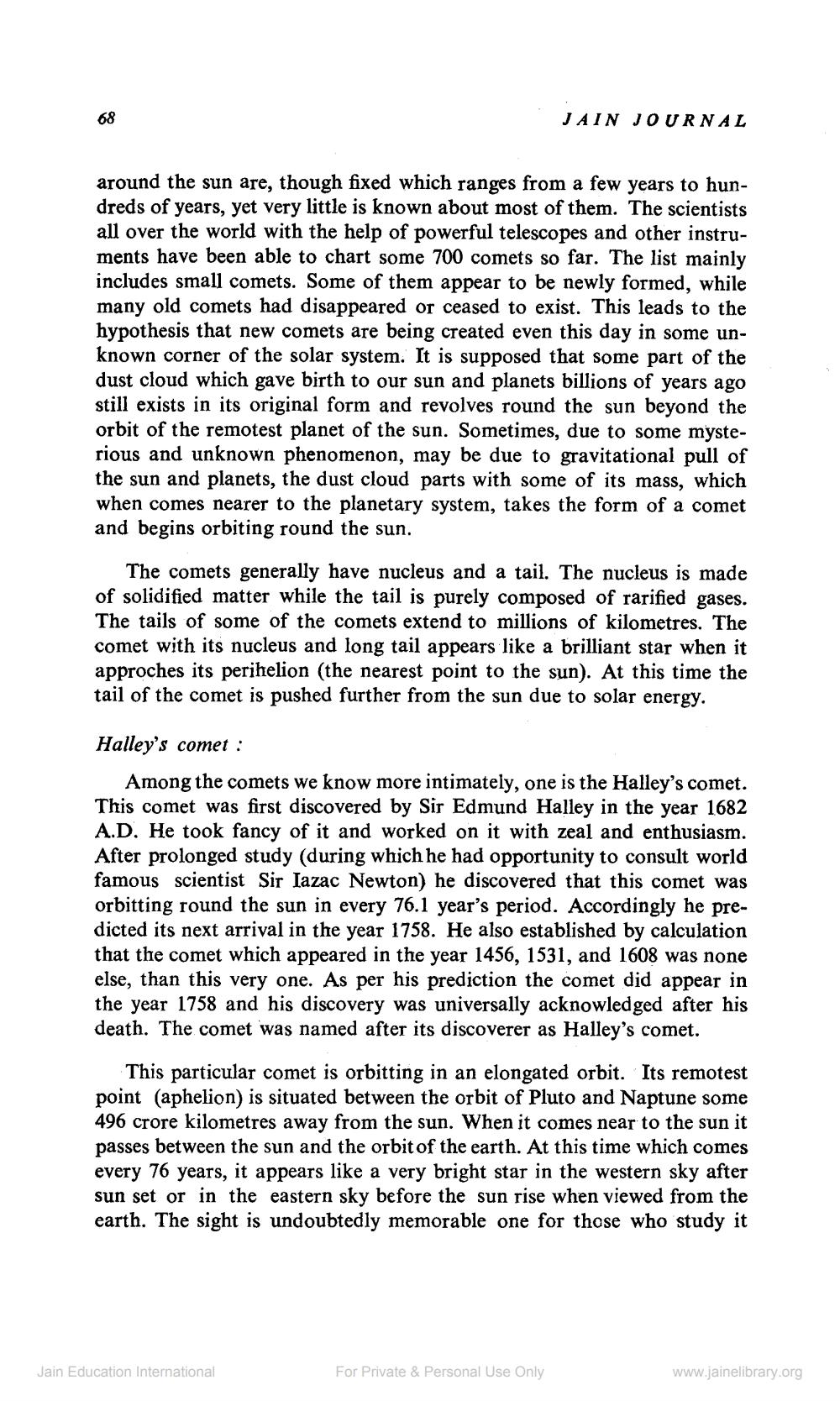Book Title: Jain Journal 1985 01 Author(s): Jain Bhawan Publication Publisher: Jain Bhawan Publication View full book textPage 5
________________ 68 JAIN JOURNAL around the sun are, though fixed which ranges from a few years to hun s of years, yet very little is known about most of them. The scientists all over the world with the help of powerful telescopes and other instruments have been able to chart some 700 comets so far. The list mainly includes small comets. Some of them appear to be newly formed, while many old comets had disappeared or ceased to exist. This leads to the hypothesis that new comets are being created even this day in some unknown corner of the solar system. It is supposed that some part of the dust cloud which gave birth to our sun and planets billions of years ago still exists in its original form and revolves round the sun beyond the orbit of the remotest planet of the sun. Sometimes, due to some mysterious and unknown phenomenon, may be due to gravitational pull of the sun and planets, the dust cloud parts with some of its mass, which when comes nearer to the planetary system, takes the form of a comet and begins orbiting round the sun. The comets generally have nucleus and a tail. The nucleus is made f solidified matter while the tail is purely composed of rarified gases. The tails of some of the comets extend to millions of kilometres. The comet with its nucleus and long tail appears like a brilliant star when it approches its perihelion (the nearest point to the sun). At this time the tail of the comet is pushed further from the sun due to solar energy. Halley's comet : Among the comets we know more intimately, one is the Halley's comet. This comet was first discovered by Sir Edmund Halley in the year 1682 A.D. He took fancy of it and worked on it with zeal and enthusiasm. After prolonged study (during which he had opportunity to consult world famous scientist Sir Iazac Newton) he discovered that this comet was orbitting round the sun in every 76.1 year's period. Accordingly he predicted its next arrival in the year 1758. He also established by calculation that the comet which appeared in the year 1456, 1531, and 1608 was none else, than this very one. As per his prediction the comet did appear in the year 1758 and his discovery was universally acknowledged after his death. The comet was named after its discoverer as Halley's comet. This particular comet is orbitting in an elongated orbit. Its remotest point (aphelion) is situated between the orbit of Pluto and Naptune some 496 crore kilometres away from the sun. When it comes near to the sun it passes between the sun and the orbit of the earth. At this time which comes every 76 years, it appears like a very bright star in the western sky after sun set or in the eastern sky before the sun rise when viewed from the earth. The sight is undoubtedly memorable one for those who study it Jain Education International For Private & Personal Use Only www.jainelibrary.orgPage Navigation
1 ... 3 4 5 6 7 8 9 10 11 12 13 14 15 16 17 18 19 20 21 22 23 24 25 26 27 28 29 30 31 32 33 34 35 36 37 38 39 40 41 42 43
